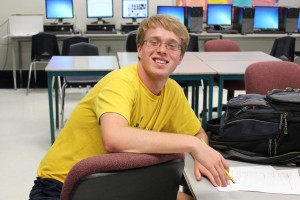At 7 on a Tuesday night, they gathered from all over the district.
Parents, teachers, board members and reporters all met to hear just what everyone thought about Rockwood’s projected $6.6 million budget shortfall.
Although not assembled for the specific purpose of fixing the budget, participants on Rockwood’s Picture Rockwood program were focused on addressing solutions to this upcoming financial burden.
This shortfall, projected for the 2013-2014 budget, came about largely as a result of state and local factors.
“The state’s funding formula wasn’t funded 100 percent,” Superintendent Dr. Bruce Borchers said. “We did not receive as much revenue as expected and ongoing expenditures continued to rise.”
Ongoing expenditures include fuel, books and teacher salaries. Expenditures like these continue to rise even after $22 million in cuts in the last five years.
Starting with $3,371,000 in cuts in the 2007 to 2008 fiscal year, Rockwood cut $5,342,660 from the budget in the 2011 to 2013 fiscal year. Savings included a renegotiation of the Student First bus contract and a reduction in counseling staff.
With the upcoming shortfall, there will potentially be teacher cuts. Twelve teacher “points” could be cut throughout the high schools, with MHS expected to take a big hit.
“We can’t be sure exactly how many cuts are to be made at MHS,” Principal Dr. Greg Mathison said. “Although the decision is made based on enrollment, so we might be cutting a larger part of those 12 points.”
Cuts could negatively affect students and future STUCO activities.
“Things would be very different if there were cuts,” senior Tannia Pourdavarani, STUCO president, said. “A lot of our money goes to
Homecoming. Cuts may affect decorations and DJs, among other things.”
Rockwood funding comes largely from local property taxes. Recently, property assessment values did not rise as
much as expected. Inflationary costs, however, did rise.
“The shortfall is the result of a combination of factors,” Tim Rooney, chief financial officer, said. “Less state revenue than expected plus higher inflationary costs led us to this situation.”
The district is taking a two-step approach toward fixing the budget. First is the district’s zero-base budgeting, in which departments within schools come up with a budget after starting from zero.
These are developed after a school is given its own budget allocation when the district presents its own budget plan on Thursday, Dec. 6.
After the money is allocated, high schools must come up with four different budget options. The first two consider staffing and the operating budget should cuts be made to make up for the shortfall.
The last two are made with an eye towards a tax levy. Whether or not a tax levy passes in April determines whether one of these last two budgets are considered.
“The administrative team and department chairs will work together to determine the specific cuts on the operating budget,” Dr. Mathison said. “We will also develop a budget that is in line with any potential tax increase, should there be one.”
The staffing proposals won’t be created until January, roughly speaking. The staffing will be discussed with the administration and department chairs as well.
The second path Rockwood is taking is Picture Rockwood. This community-based initiative seeks to get input from parents and teachers on the budget process. At the Tuesday, Oct. 30 meeting, participants were presented with four different
budget options, all of which included a tax increase ranging from 67 cents to more than a dollar.
However, Dr. Borchers said the district’s own budget sheets will be the primary source of reference.
Rockwood would have received $3 million if Proposition B had passed on Tuesdsay, Nov. 6.
Other options to generate revenue are currently being discussed by Rockwood parents and stakeholders at Picture Rockwood meetings. Results of the October meetings will be released later this year.



